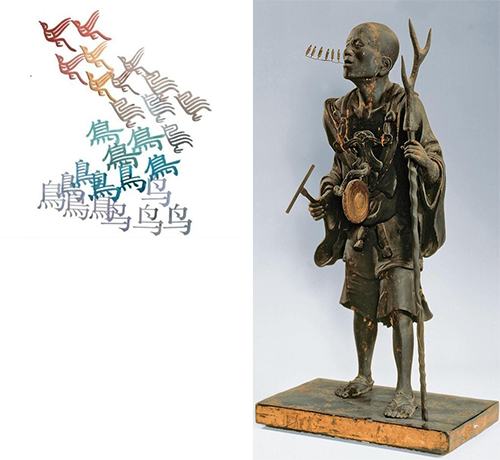
| ||||||||
| Level 300 | ||||||||
| ||||||||
| Level 400 | ||||||||
|
| ||||||||
| History of Art | ||||||||
| LS&A | ||||||||
| University of Michigan | ||||||||
| Back to the list of courses |
Undergraduate Seminar: Language in Asian Visual Culture

From memes to advertisements to religious works and more, visual representations of language convey messages to us every day—subtly accomplishing specific goals for companies, people, and groups. Why are motivational quotes often paired with certain images? How do the texts and images on memes complement each other to convey a punchline? In short, what do visual representations of language do to us and how do they do it? Whether thought, spoken,written, signed, or otherwise—language is an integral part of everyday life. We are inundated with combinations of image and text from childhood through adulthood. Due to this, the combination has potential as a powerful political, social, and/or economic tool. This has been true throughout history. For example, premodern rulers used public inscriptions to exert authority. In other cases, people both in ancient times and today have used (and even monetized the use of) written phrases or characters as talismans to ward off evil. And yet other works such as medieval and early modern illustrated books and handscrolls created and managed social expectations within a community.
This course examines many such word and image relationships in visual culture. Drawing on examples from ancient to contemporary Asia (Turkey to Japan), we will explore religious works, political propaganda, magic and talismans, illustrated literary works, calligraphy, graphic design, video, tattoos, and more. A primary goal of the course is to train students to analyze the visual and rhetorical power of words to tease out ways that this relationship can exert control or influence over beliefs or opinions in various aspects of our lives. No experience in Asian languages or background in art history or Asian history is required.
Textbooks/Other Materials: No textbook required
Course Requirements: Participation – 25%, Reading and object responses – 20%, Museum object assignment – 15%, Library assignment – 15%, Final paper and presentation – 25%
Intended Audience: Anyone welcome. No experience in Asian languages or background in art history or Asian history is required.
Class Format: Two three-hour seminars per week, consisting primarily of discussion and analyzing objects with some trips to campus museums and film viewings in the classroom.
HISTART Concentration Distributions: C. Asia (Including China, Japan, South and Southeast Asia, and the Pacific); 2. Medieval; 4. Modern and Contemporary